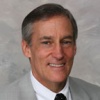Have we come full circle? Are all those things we did as a kid for exercise and the food we were forced to eat by stern mothers now making a comeback? Are we walking and bicycling and eating our vegetables? Some of us are.
Unfortunately, the statistics say a significant majority of Americans aren't doing enough. It's estimated that half of the U.S. population is overweight and fewer than 25 percent meet the Surgeon General's recommendation for physical activity through leisure activities. People who live in Illinois are even less likely to exercise. Almost 58 percent of Illinois residents are leading sedentary lives, according to a behavioral risk factor surveillance study by the Illinois Department of Public Health.
If this were a problem that only affected individuals, it would be a problem isolated to those persons. Not good, but not affecting others. But that isn't the case. Out-of-shape employees affect productivity through a lack of energy and taking more sick days than their in-shape counterparts.
In addition, many medical issues can result from a poor diet and lack of exercise. Heart disease remains the number one cause of death for Americans-both men and women. Diabetes, high blood pressure, and high cholesterol are all linked to poor diet and decreased physical activity.
Is this a solvable problem? Is this a trend that can be reversed? People like Mark Fenton think it's solvable and reversible. He's an author, host of America's Walking on PBS television, and a manager at the University of North Carolina's Pedestrian and Bicycle Information Center. He's a passionate proponent of individuals getting fit and of having businesses and communities support that effort. OSF Saint Francis Medical Center is bringing Fenton to the Par-A-Dice Hotel September 30 to share his ideas; everyone is welcome to attend.
Fenton looks at communities a little differently than most. He observes and asks whether it's an environment that encourages, rather than discourages, such activities as walking or bicycling. The general attitudes of a community's residents and business leaders are key to developing an approach that will allow more of us to get our needed exercise in a relaxed and enjoyable fashion.
At OSF Saint Francis, our Choose Health! employee wellness program encourages employees and volunteers to take part in many walking programs throughout the year. With our last program, pedometers were given out, and employees tracked their steps each week. All of these activities help encourage greater activity by residents of the tri-county community. Many of us actually found it fun to track our steps-to measure just how much we do on a daily basis. We now may be ready for more steps, both literally and figuratively, as we strive for a healthier population and workforce. I look forward to Mark Fenton's visit to Peoria and hope you can join us to hear his message. IBI

